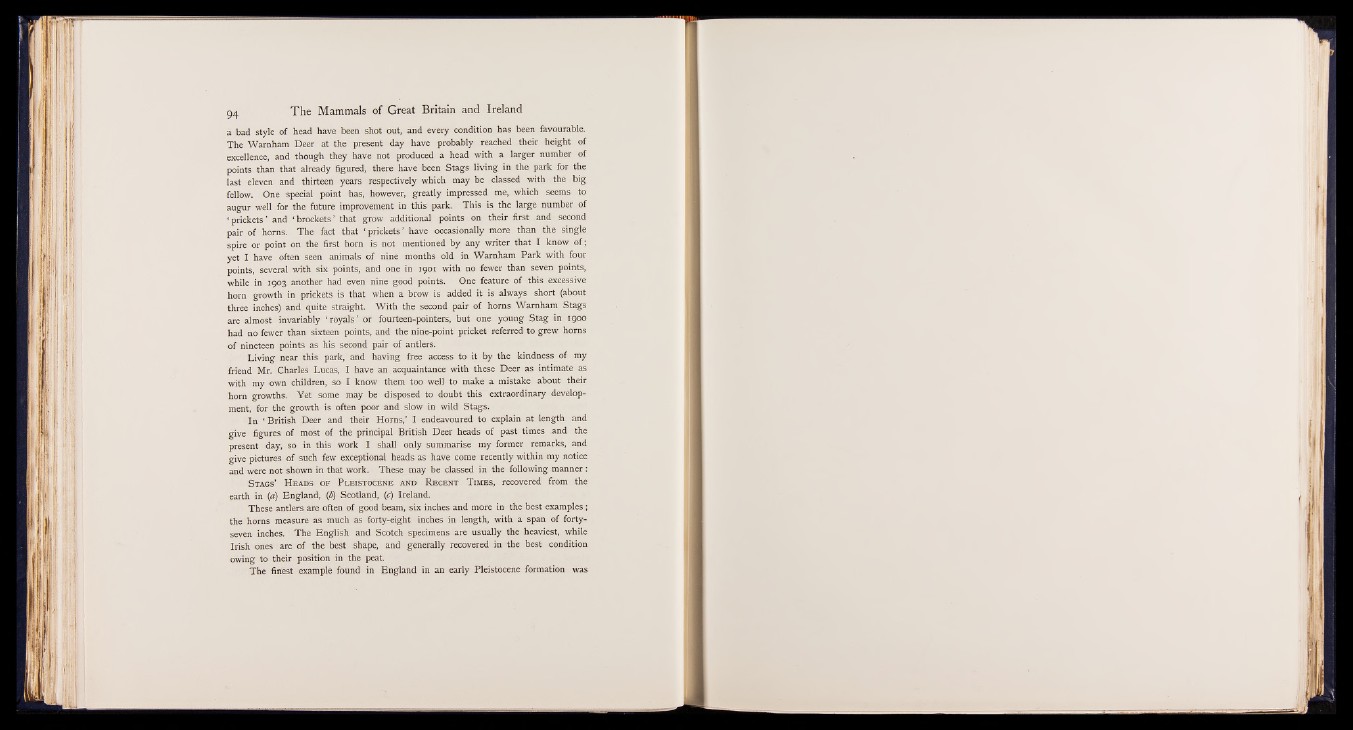
94 The Mammals of Great Britain and Ireland
a bad style of head have been shot out, and every condition has been favourable.
The Warnham Deer at the present day have probably reached their height of
excellence, and though they have not produced a head with a larger number of
points than that already figured, there have been Stags living in the park for the
last eleven and thirteen years respectively which may be classed with the big
fellow. One special point has, however, greatly impressed me, which seems to
augur well for the future improvement in this park. This is the large number of
‘ prickets’ and ‘ brockets’ that grow additional points on their first and second
pair of horns. The fact that ‘ prickets’ have occasionally more than the single
spire or point on the first horn is not mentioned by any writer that I know of;
yet I have often seen animals of nine months old in Warnham Park with four
points, several with six points, and one in 1901 with no fewer than seven points,
while in 1903 another had even nine good points. One feature of-this excessive
horn growth in prickets is that when a brow is added it is always short (about
three inches) and quite straight. With the second pair of horns Warnham Stags
are almost invariably ‘ royals’ or fourteen-pointers, but one young Stag in 1900
had no fewer than sixteen points, and the nine-point pricket referred to grew horns
of nineteen points as his second pair of antlers.
Living near this park, and having free access to it by the kindness of my
friend Mr. Charles Lucas, I have an acquaintance with these Deer as intimate as
with my own children, so I know them too well to make a mistake about their
horn growths. Yet some may be disposed to doubt this extraordinary development,
for the growth is often poor and slow in wild Stags.
In ‘ British Deer and their Horns,’ I endeavoured to explain at length and
give figures of most of the principal British Deer heads of past times and the
present day, so in this work I shall only summarise my former remarks, and
give pictures of such few exceptional heads as have come recently within my notice
and were not shown in that work. These may be classed in the following manner :
Stags’ Heads of Pleistocene and Recent T imes, recovered from the
earth in (a) England, (6) Scotland, (c) Ireland.
These antlers are often of good beam, six inches and more in the best examples;
the horns measure as much as forty-eight inches in length, with a span of forty-
seven inches. The English and Scotch specimens are usually the heaviest, while
Irish ones are of the best shape, and generally recovered in the best condition
owing to their position in the peat.
The finest example found in England in an early Pleistocene formation was